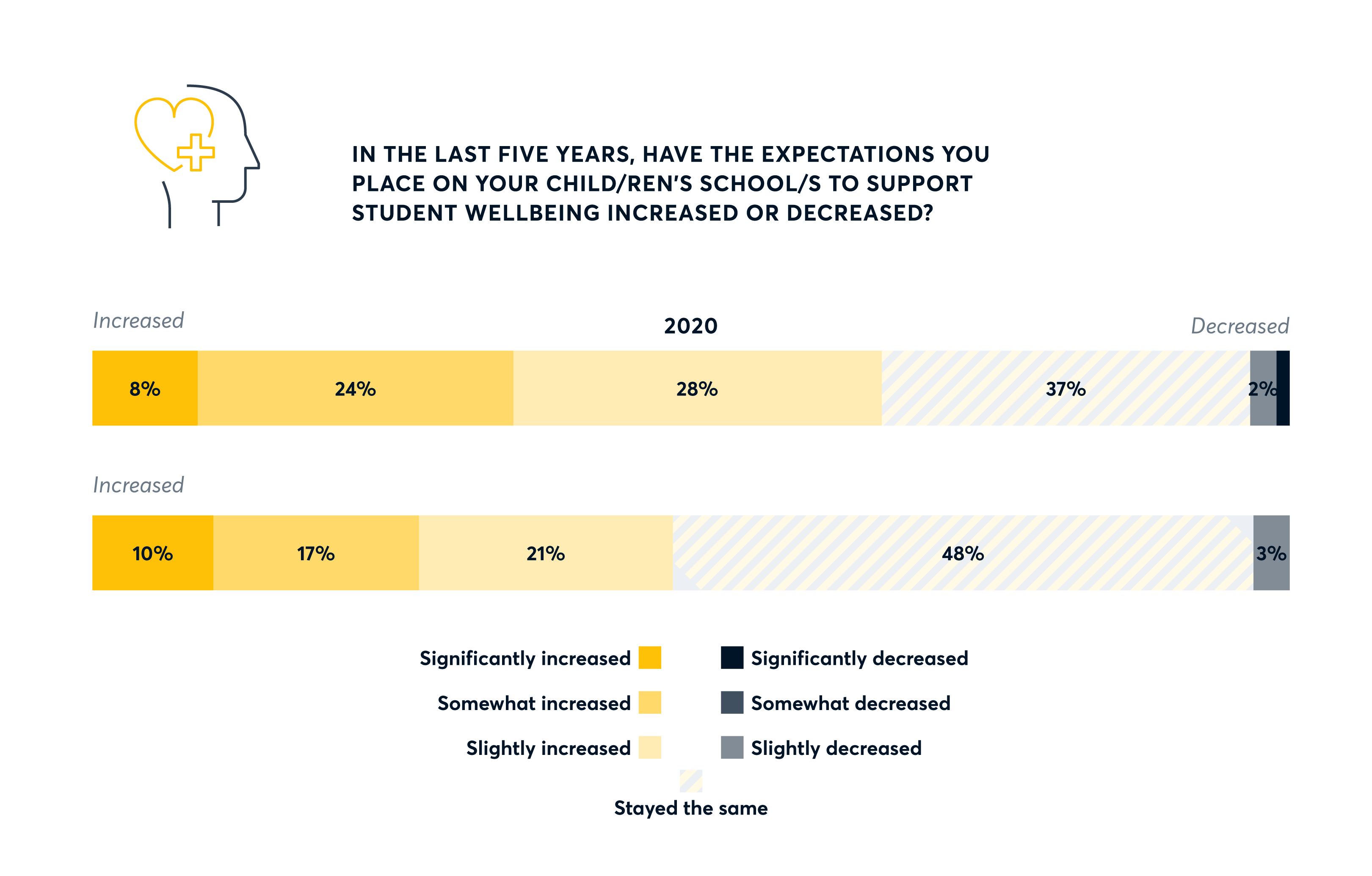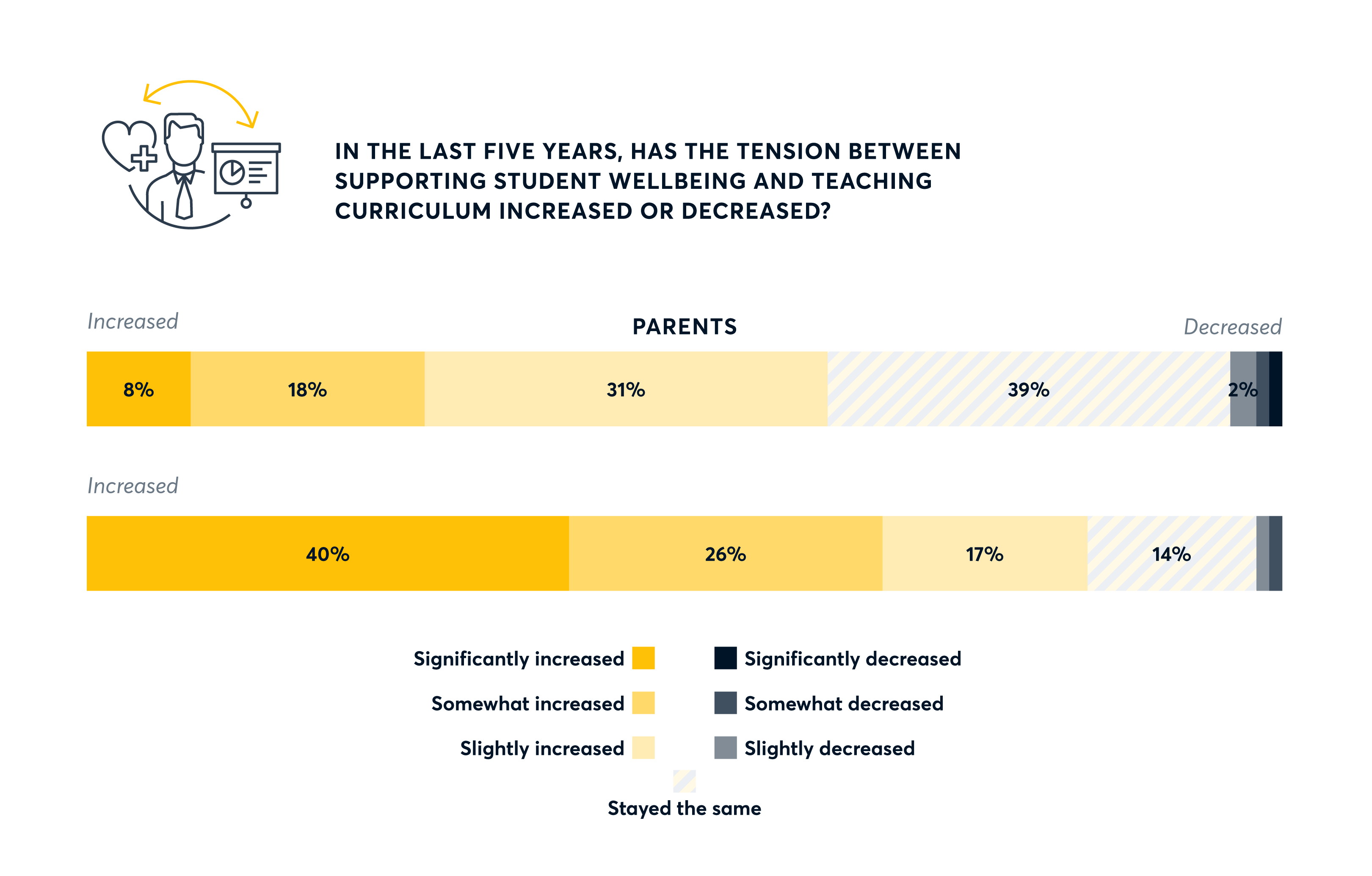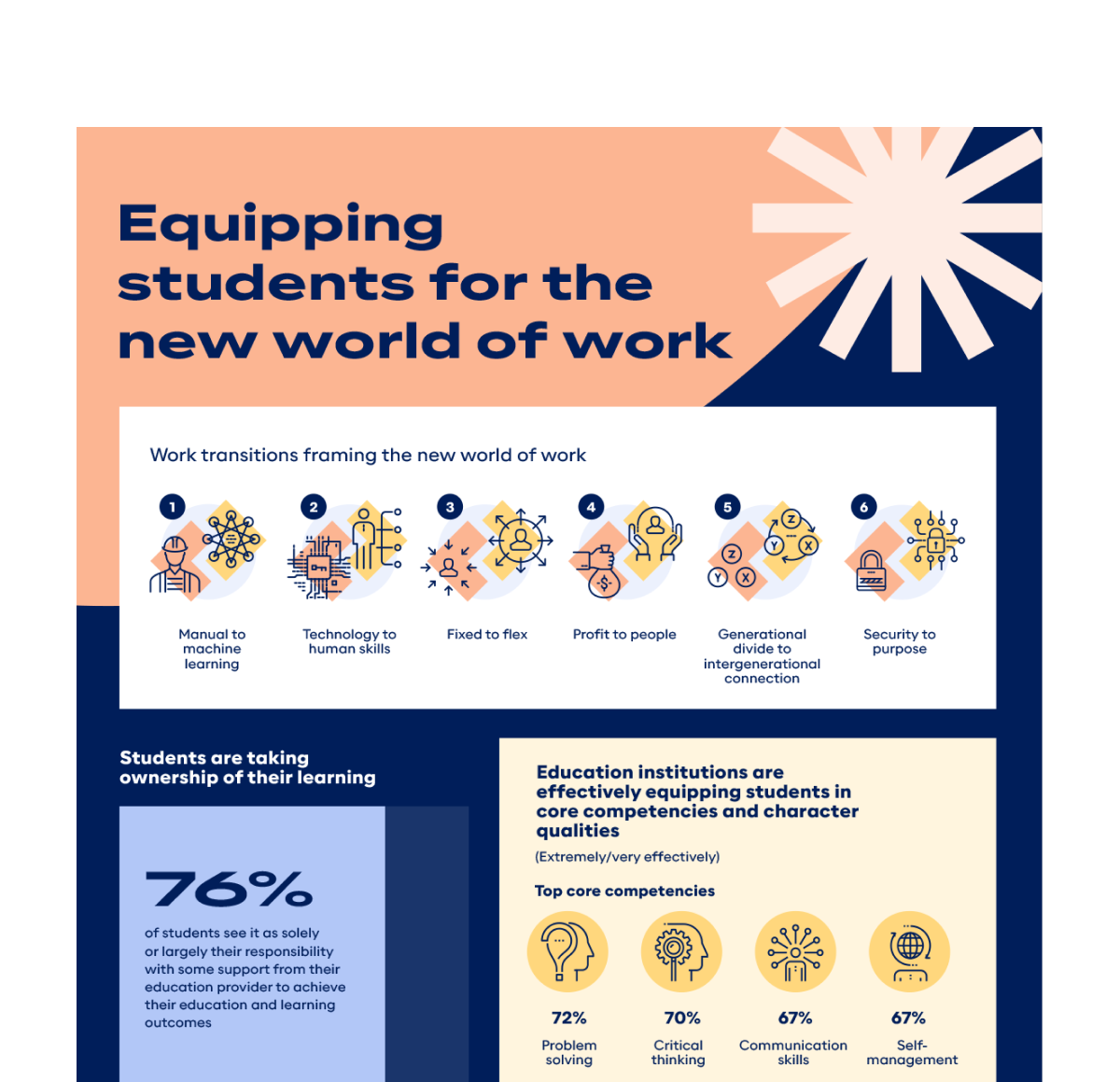The tension of balancing wellbeing and curriculum

The topic of wellbeing has been on the rise over the past few years, we don’t have to look far to see its prevalence in conversation and a key area of consideration in schools, organisations and society as a whole.
Our research shows that in the last five years, three in five parents (60%) believe the expectations they place on their child’s school to support student wellbeing have increased (significantly/somewhat/slightly). This has up 12 percentage points from 48% in 2019.
As the focus on wellbeing has increased, so too has the tension of balancing wellbeing support and the curriculum. In the last five years, almost three in five parents (57%) believe the tension between supporting student wellbeing and teaching curriculum has increased (significantly/somewhat/slightly), while almost two in five (39%) believe it has stayed the same. Educators are experiencing this too, with more than four in five (83%) believing the tension between supporting student wellbeing and teaching the curriculum has increased (significantly/somewhat/slightly).
Top challenges for today’s students
The top challenges for students today centre around both wellbeing and curriculum. Educators believe the top challenge for both high school and primary school students is online bullying through social networks (77% high school, 60% primary school). Parents agree for primary school (bullying in person – 50%), however, for high school students’ parents believe the high pressure to do well in exams and assessments (60%) is their top challenge.
More than three in four educators (77%) agree that the high pressure to do well in exams and assessments is extremely/very challenging for high school students. Similarly, more than half of educators (54%), and two in five parents (42%), believe the social pressure to be a high achiever is extremely/very challenging for primary school students.
Rising pressure for success
Parents are feeling the tension of balancing curriculum and wellbeing too. A good education is said to open many doors and set students up for success. In an increasingly globally connected world, parents are feeling the pressure to set their children up for success.
In the last five years more than two thirds of parents (67%) believe the pressure to set their child up for success has increased. At times, the pressure parents feel to set their child up for success has been transferred to their child. Almost half of parents (49%) feel they have placed too much pressure on their child to achieve at school at some point.
Support for curriculum and wellbeing is not either/or, but both
The significant challenges school communities will face over the coming 12 months centre around both curriculum and wellbeing. This highlights that it is not either/or, but support for both curriculum and wellbeing that is required within Australian schools. Parents believe the most significant challenges facing school communities are addressing bullying (66%), supporting students with mental health conditions (52%) and improving literacy and numeracy (49%). Educators have similar expectations but believe the number one challenge is supporting students with mental health conditions (73%). Educators also believe improving literacy and numeracy (51%) and better engaging with students in learning (47%) are significant challenges facing school communities.
To be prepared for schooling now and into the future, it is important for schools to champion and support both the curriculum and wellbeing within their school. Being aware that it is a tension experienced by many and is looking to rise into the future.







